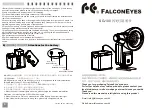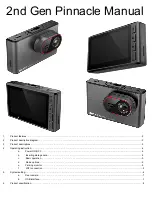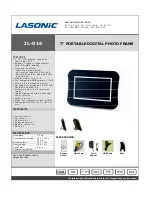
1
EN
Appendix
Battery handling precautions
In addition to the batteries provided with the
camera, the following types of battery can be
used. Choose the power source best suited to
the situation.
AA alkaline batteries
The number of pictures that you can take may
vary considerably depending on the battery
manufacturer and shooting conditions.
AA NiMH batteries (rechargeable batteries)
Being rechargeable, Olympus NiMH batteries
are reusable and economical. For details, refer
to the instruction manual for your charger.
CAUTION:
There is a risk of explosion if the battery is
replaced with the incorrect battery type.
Dispose of the used battery following the
instructions. “Battery Handling Precautions”
(p. 78)
The following types of batteries cannot be
used:
Lithium battery pack (CR-V3)/AA (R6)
manganese (zinc-carbon) batteries/AA (R6)
oxyride batteries/AA (R6) lithium batteries
Power consumption by the camera varies
depending on which functions are used.
Power is consumed continuously during the
conditions described below causing batteries
to become exhausted quickly.
The zoom is used repeatedly.
The shutter button is pressed halfway
repeatedly in shooting mode, activating the
auto focus and digital image stabilization.
Set [FULLTIME AF] to [ON].
The monitor is left on for an extended period
of time.
The camera is connected to a computer or
printer.
Battery life varies depending on the type of
battery, manufacturer, shooting conditions,
etc. Similarly, the camera may turn off without
displaying the battery level warning or may
display the battery level warning more quickly.
•
•
•
•
•
•
•
•
•
•
Camera care
Exterior
Wipe gently with a soft cloth. If the camera is
very dirty, soak the cloth in mild soapy water
and wring well. Wipe the camera with the
damp cloth and then dry it with a dry cloth. If
you have used the camera at the beach, use a
cloth soaked in clean water and wrung well.
Monitor and viewfinder
Wipe gently with a soft cloth.
Lens
Blow dust off the lens with a commercial
blower, then wipe gently with a lens cleaner.
Do not use strong solvents such as benzene
or alcohol or chemically treated cloth.
Mold may form on the lens surface if the
lens is left dirty.
Storage
When storing the camera for extended periods,
remove the battery, AC adapter and card, and
keep in a cool, dry place that is well ventilated.
Periodically insert the battery and test the
camera functions.
Avoid leaving the camera in places where
chemical products are handled since this
may result in corrosion.
•
•
•
•
•
Summary of Contents for SP-590 UZ - Digital Camera - Compact
Page 86: ...VN183901 ...
















































